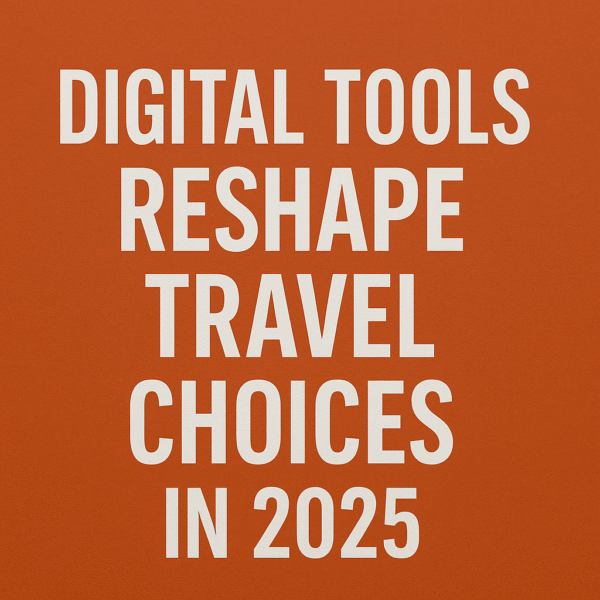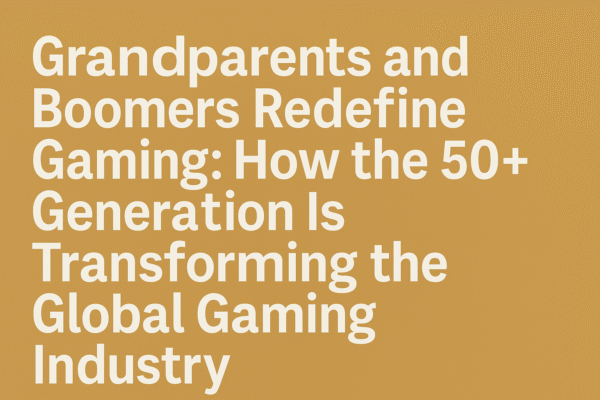Gaming is no longer confined to teenagers or tech-savvy millennials. In 2025, nearly 30% of gamers in the United States are aged 50 and above, a sharp rise from just 9% in 1999. This shift reflects a global transformation as gaming becomes a universal form of entertainment enjoyed by multiple generations. According to industry experts, the average gamer today is 36 years old, with women making up an impressive 47% of the player base. These figures highlight how the gaming world has evolved from a niche pastime to a mainstream, intergenerational phenomenon.
Gaming Evolves with Its Players
The evolution of gaming has been driven by technology, accessibility, and cultural shifts. Those who grew up in the 1980s and 1990s with early consoles like the NES or Sega Genesis have maintained their love for gaming into adulthood — and now, into grandparenthood.
Improved game design has made it easier for mature audiences to join the digital playground. Modern titles feature scalable text sizes, simplified controls, and adaptive difficulty settings, ensuring that players of all skill levels can enjoy immersive experiences. From mobile games on smartphones to expansive console adventures, the industry now caters to everyone, regardless of age or experience.
The Rise of Older Gamers in the U.S.
Older players are no longer a niche demographic; they are a powerful and growing segment. Game developers have responded with accessible tutorials and adaptive mechanics that ensure older players can engage seamlessly with new titles. This demographic is also more financially stable, giving them the spending power to invest in premium games, downloadable content, and subscription services.
What was once considered a hobby for teenagers has now become a family bonding activity, with grandparents joining younger family members in online and offline gaming sessions.
Women Gamers Lead the Shift
The gaming landscape is also witnessing a dramatic rise in female participation. Women now represent 47% of all gamers in the U.S., and within the 50+ demographic, women are slightly more active than men, accounting for 52% of gaming participation. Even in the Silent Generation — those in their 80s and 90s — women are gaming at rates nearly equal to men.
This shift challenges outdated stereotypes of gaming as a male-dominated world. Older women are engaging deeply, spending time and money on games that resonate with their interests, from puzzle-based apps to expansive narrative-driven adventures.
Marketing to Mature Audiences
With this transformation, marketing strategies need to adapt. Campaigns that celebrate diversity, inclusivity, and mature perspectives are proving more effective in engaging this powerful demographic. Storylines that reflect real-life experiences, community-driven content, and opportunities for social interaction resonate strongly with older gamers, particularly women.
Developers that fail to recognize this shift risk missing out on a loyal and growing market segment that values both innovation and authenticity.
Gaming as a Family Connector
Gaming has evolved into a shared family experience that transcends generations. The design of modern games accommodates shorter play sessions and cross-platform compatibility, allowing grandparents, parents, and children to play together seamlessly.
This trend is redefining the image of the modern gamer. Today, a gamer could be a grandmother in Florida playing puzzle games with her grandkids, or a grandfather in Tokyo exploring immersive virtual worlds with friends across the globe.
Steady Growth Over Two Decades
The rise of older gamers did not happen overnight. In 1999, only 9% of gamers were over 50. By 2004, that number had nearly doubled to 17%, and by 2024, it had reached almost 30%. The advent of smartphones and mobile gaming has been pivotal in this growth. Casual games like word puzzles, digital board games, and social gaming apps have introduced millions of older adults to the world of interactive entertainment.
Global Reach: A Multi-Billion Player Industry
This shift is part of a larger global gaming boom, with 3.32 billion players worldwide as of 2025 — a number expected to surpass 3.5 billion by the end of the year. Asia leads the market with 1.48 billion players, followed by Europe with 715 million, and North America with 285 million.
For developers, this means designing games that are localized, culturally relevant, and accessible to diverse audiences worldwide. Older players across regions seek intuitive interfaces and meaningful narratives that reflect their lifestyles and interests.
Designing for All Ages
Game design is increasingly focused on inclusivity. Features like scalable interfaces, simplified tutorials, and customizable settings ensure games remain approachable to players of all ages. Storylines are evolving, too, incorporating mature themes and complex narratives that resonate with older audiences seeking depth and emotional connection.
This inclusive approach builds loyalty and keeps players engaged longer, particularly among mature gamers who value quality over quick thrills.
An Industry at a Crossroads
The gaming industry stands at a pivotal moment. With nearly one-third of U.S. gamers now aged 50 or older, and women closing the gender gap, developers have an unprecedented opportunity to embrace diversity and expand their audience. Those who innovate with inclusivity and cultural awareness will thrive in this new era.
Conclusion: Gaming for Every Generation
Gaming is no longer defined by age or gender. Grandparents, parents, and children are now united by a shared love of games, creating a universal language of play. With billions of players around the world, the future of gaming is inclusive, diverse, and intergenerational.
From casual mobile titles to expansive virtual universes, the message is clear: the gamer of today — and tomorrow — could be anyone, regardless of age, gender, or background. The industry’s next great success lies in embracing this powerful and ever-growing community of older gamers.
For more travel news like this, keep reading Global Travel Wire

















